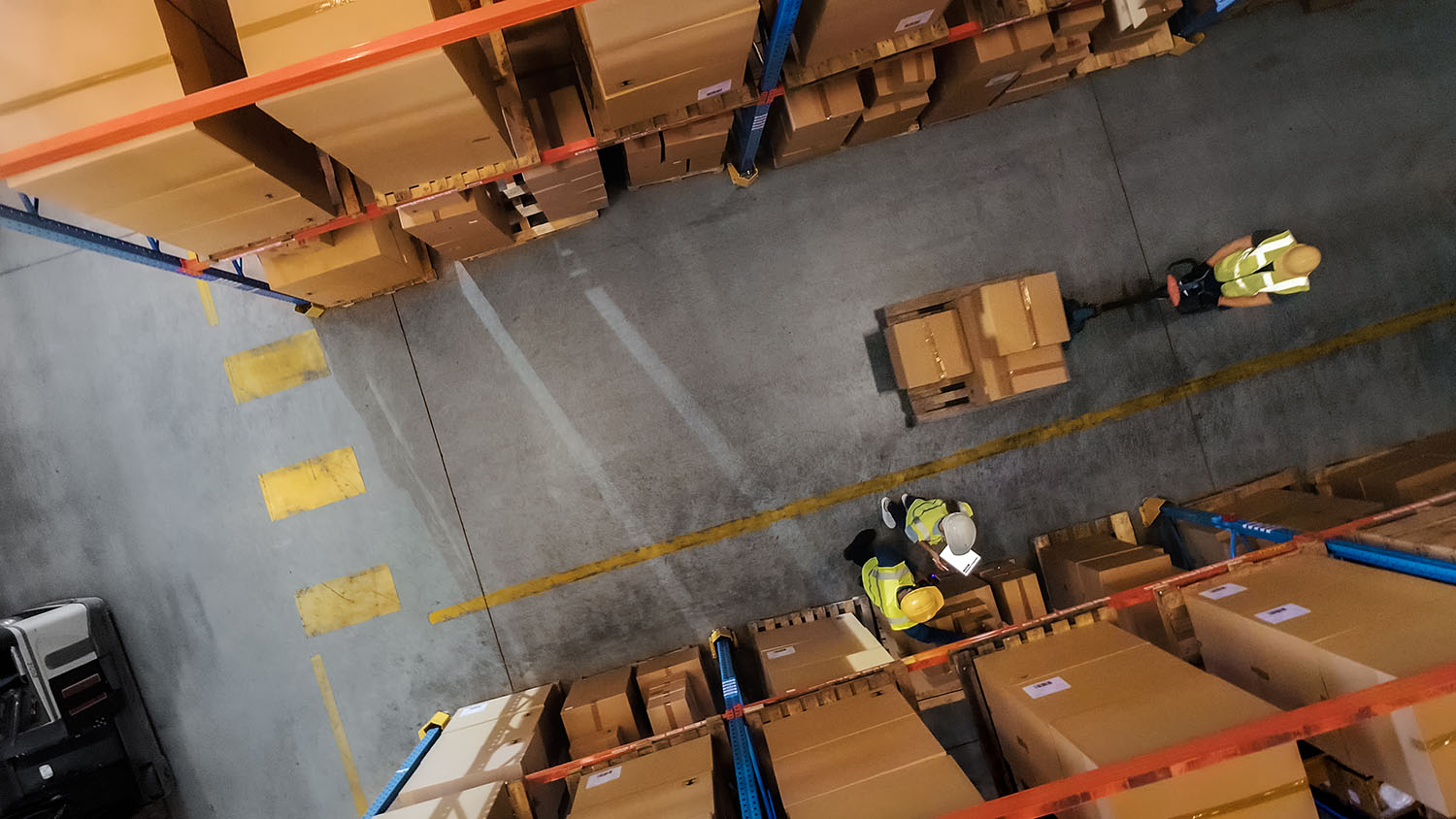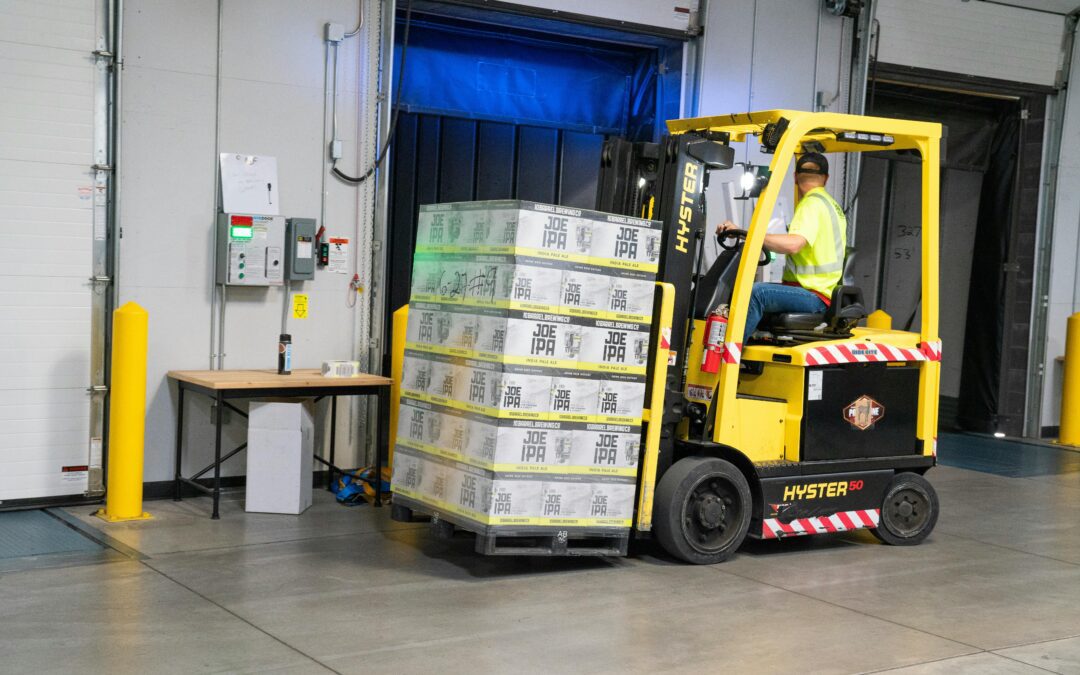Finding the right logistics partner can make or break your supply chain. Whether you’re scaling an e-commerce brand, optimizing a retail operation, or managing a complex supply network, choosing the right level of support is critical.
That’s where the 3PL and 4PL models come in.
Both offer ways to outsource logistics, but they serve very different roles. Understanding those differences can help you make smarter decisions for long-term growth.
And you’re not alone in exploring these options.
The global 3PL market alone hit $1.5 trillion in 2024 and continues to grow rapidly as more businesses turn to outsourced logistics solutions to stay competitive.
In this guide, we’ll break down 3PL vs 4PL logistics—what each one does, how they compare, their pros and cons, and how to choose the best model for your business.
We’ll also cover how Da Vinci WMS supports logistics providers across both models with real-time, advanced time solutions.
What Is a 3PL?
A third-party logistics provider (3PL) is a company that businesses hire to outsource part or all of their logistics operations.
Instead of managing warehousing, inventory, fulfillment, and shipping in-house, companies rely on 3PLs to handle these services more efficiently.
A good 3PL acts like an extension of your business, overseeing the entire flow of products from the moment inventory arrives at a warehouse to the moment it reaches your customer’s doorstep. Some also offer value-added services like kitting, labeling, light assembly, or returns management, giving businesses more flexibility as they grow.
Typical services provided by 3PLs include:
- Warehousing and inventory storage
- Order picking, packing, and shipping
- Freight and transportation coordination
- Real-time stock tracking and reporting
- Handling customer returns and restocking
Many 3PL providers specialize in industries like food, fashion, or electronics, tailoring their services to the unique needs of each sector.
For example, large retailers like Walmart often partner with external 3PLs during peak seasons to manage overflow inventory and fulfill increased order volumes. This helps them maintain fast delivery speeds and customer satisfaction without overextending their internal logistics teams.
What Is a 4PL?
A fourth-party logistics provider (4PL) goes a step beyond traditional 3PL services.
Instead of just handling warehousing and fulfillment, a 4PL acts as a strategic partner that manages the entire supply chain on behalf of the business.
With a 4PL, you’re not just outsourcing logistics operations; you’re outsourcing the coordination, optimization, and high-level management of multiple logistics providers, technologies, and supply chain processes.
The role of a 4PL is to bring all the moving parts together. From transportation and warehousing to inventory management, order fulfillment, and data reporting—often across multiple 3PL partners and locations—a 4PL seeks to create a seamless, optimized logistics network.
Common services or areas of focus for 4PLs include:
- Supply chain consulting and network design
- Integration and management of multiple 3PLs
- End-to-end visibility and analytics
- Technology stack integration
- Strategic sourcing and vendor management
Unlike a 3PL, a 4PL typically doesn’t own physical assets like trucks or warehouses. Their value lies in managing relationships, technology, and operations from a higher, more strategic level.
For example, a multinational company like Unilever might work with a 4PL to coordinate dozens of logistics providers across different regions, ensure compliance with local regulations, and maintain real-time visibility into inventory and shipments, without having to manage those complexities internally.
3PL vs 4PL: Key Differences
At first glance, 3PL and 4PL providers may seem similar. Both are ways for businesses to outsource their efforts to manage logistics and improve supply chain efficiency.
But when you dig deeper, the differences between them are clear.
A 3PL typically focuses on executing logistics operations like storage, order fulfillment, and shipping.
A 4PL, on the other hand, oversees the entire logistics ecosystem, acting as a single point of contact to manage multiple providers, processes, and technologies at a strategic level.
Here’s a quick comparison:
| Feature | 3PL | 4PL |
| Primary Role | Executes logistics operations | Manages the full supply chain strategy |
| Services | Warehousing, fulfillment, shipping | 3PL management, consulting, technology integration |
| Control | Shared between the business and 3PL | Complete control handled by 4PL |
| Relationship | Tactical partnership | Strategic, long-term partnership |
| Technology | May offer basic tracking and reporting | Provides integrated, end-to-end visibility |
| Ownership of Assets | May own warehouses, trucks, etc. | Typically asset-light (manages others’ assets) |
| Cost | Pay for services you use | Pay for comprehensive supply chain management |
| Best For | Businesses needing operational support | Businesses needing complete supply chain oversight |
Both models offer major advantages depending on your business needs, whether you’re looking to outsource specific tasks or you need a partner to manage your entire logistics operation from top to bottom.
Pros and Cons of 3PL
Partnering with a third-party logistics provider can offer major advantages, but it’s not without a few trade-offs. Here’s a look at the key pros and cons to keep in mind:
Pros of 3PL
- Cost savings: Outsourcing warehousing, labor, transportation, and technology can be much more affordable than building and maintaining your own logistics infrastructure.
- Scalability: 3PLs can flex with your needs, scaling up during peak seasons or expansion periods without requiring massive internal investments.
- Expertise and efficiency: 3PLs specialize in logistics, meaning you get access to best practices, advanced technology, and operational know-how without having to develop it all in-house.
- Faster shipping: Many 3PLs operate from multiple fulfillment centers, allowing you to offer faster delivery times and reach more customers more efficiently.
Pro tip: Partner with a 3PL that has warehouses in different regions. Strategic warehouse placement can cut your average delivery times by 1–2 days without increasing shipping costs.
- Focus on core business: Handing off logistics allows you to spend more time on marketing, sales, product development, and customer experience.
Cons of 3PL
- Less direct control: Since you’re outsourcing, you lose some hands-on control over how inventory is handled, orders are packed, and deliveries are made.
- Potential for service issues: Not all 3PLs are created equal. Mistakes in order fulfillment, delays, or lackluster customer service can impact your brand reputation. For instance, during the 2021 holiday season, FedEx Ground services faced package delay rates of up to 19%, affecting businesses that relied on timely deliveries.
- Technology gaps: Some 3PLs may offer only basic visibility into inventory and shipments, making it harder to maintain real-time oversight without the right WMS integrations.
- Customization limits: If you need highly specialized logistics processes, some 3PLs might not offer the flexibility or customization you want.
Pros and Cons of 4PL
Choosing a fourth-party logistics provider can unlock major strategic advantages, especially for businesses with complex or multi-layered supply chains. But like any model, it also comes with some trade-offs to weigh carefully.
Pros of 4PL
- End-to-end supply chain management: 4PLs oversee the entire logistics network, from warehousing and transportation to inventory and vendor management, creating a single, streamlined point of control.
- Improved visibility and data insights: Most 4PLs offer integrated technology platforms that provide real-time data across all providers, facilities, and shipments, making it easier to spot inefficiencies and optimize performance.
- Less operational burden: By outsourcing strategic supply chain management, businesses free up their internal teams to focus on growth, innovation, and customer experience.
- Stronger scalability: As your business grows, a 4PL can quickly adapt by adding new 3PL partners, expanding into new regions, or shifting supply chain strategies without significant disruptions.
- Expertise across logistics functions: 4PLs bring specialized knowledge in areas like customs, compliance, carrier negotiations, and tech integration, offering a depth of knowledge and expertise that would be expensive to build in-house.
Cons of 4PL
- Higher costs: Comprehensive supply chain management services typically cost more than basic 3PL partnerships, especially when technology platforms and consulting are involved.
- Less direct oversight: Because you’re handing over control of multiple logistics providers and processes, you may have less day-to-day visibility or influence over individual operations.
- Dependency risk: Relying heavily on a single 4PL partner means that if the relationship falters, due to poor service, misalignment, or financial issues, it could disrupt your entire supply chain.
- Longer onboarding times: Implementing a full 4PL partnership usually involves deeper technology integrations, data sharing agreements, and strategic planning, which can take longer to set up compared to a standard 3PL onboarding.
Pro tip: Before signing with a 4PL, create a phased onboarding plan—start with one region, facility, or service line at a time. This helps you spot and solve issues early before rolling them out at full scale.
How to Choose Between a 3PL and 4PL
Choosing between a 3PL and a 4PL isn’t just about what sounds more impressive. It comes down to your business’s specific needs, complexity, and long-term goals. Here are a few key questions to help guide your decision:
How complex is your supply chain?
If you’re managing a simple flow of inventory from one warehouse to your customers, a 3PL might be all you need. But if you’re juggling multiple suppliers, warehouses, shipping partners, and regions, a 4PL can bring everything together under one strategic umbrella.
How much control do you want?
3PLs let you stay more involved in day-to-day logistics decisions. 4PLs, by contrast, take over full operational management, which is ideal if you want to stay hands-off and focus on big-picture growth.
What’s your growth plan?
If you’re planning to expand into new markets, launch new product lines, or enter international territories, a 4PL can help scale your supply chain without overwhelming your internal teams.
Do you have the internal expertise?
Companies with strong logistics departments often find that working with a 3PL gives them enough support without losing control. But if your team is lean or you lack specialized logistics knowledge, partnering with a 4PL can fill those gaps.
And ultimately, it depends on how you view your supply chain’s role in your business. If you see logistics as just a cost center, a traditional 3PL is sufficient.
But if you see it as a strategic growth engine, a 4PL could unlock far greater value over the long term.
Says Adrian Gonzalez, President of Adelante SCM: “You have to think and act beyond cost management and find ways to leverage supply chain and logistics as a competitive weapon — that is, look for ways to leverage supply chain management to drive top-line growth, increase market share, and enhance customer loyalty.”
How Da Vinci Supports High-Performing 3PLs and 4PLs
Running a high-performing logistics operation today demands more than just warehouses and trucks. It requires real-time visibility, operational control, and seamless coordination across multiple systems, partners, and customers.
That’s where Da Vinci WMS stands out.
For 3PLs, Da Vinci makes it easy to manage complex, multi-client operations under one system.
With real-time inventory tracking, client-specific workflows, advanced billing, and automated order management, 3PLs can improve accuracy, increase efficiency, and scale faster, without the chaos of juggling disconnected tools.
For 4PLs, Da Vinci acts as the centralized technology hub that ties everything together.
It provides real-time visibility across multiple warehouses, suppliers, and fulfillment partners, making it easier to manage diverse operations from a single dashboard.
And with powerful integrations with ERPs, e-commerce platforms, and shipping carriers, combined with customizable reporting and operational controls, gives 3PLs and 4PLs the flexibility to adapt quickly as their networks evolve.
In short, whether you’re operating a single-site warehouse or coordinating a complex, multi-partner supply chain, Da Vinci WMS empowers you to deliver better service, faster fulfillment, and smarter logistics decisions.
3PL vs 4PL FAQs
Can a 3PL become a 4PL?
Yes, a 3PL can expand into a 4PL by offering full supply chain management, not just warehousing and fulfillment. But they’ll need advanced technology, multi-partner coordination capabilities, and a shift from operational execution to strategic oversight.
Do 4PLs own physical assets?
Usually not. Most 4PLs are asset-light. They focus on managing 3PLs, freight carriers, and technology platforms rather than owning trucks, warehouses, or fleets themselves.
Is it possible to use both a 3PL and a 4PL?
Yes, and many businesses do. A 4PL can manage relationships with several 3PLs, making it easier for companies to scale operations, expand into new regions, and simplify supply chain management through one point of contact.
Which model is better for e-commerce brands?
It depends on the brand’s size and goals. Smaller and mid-sized e-commerce brands often benefit more from 3PLs that focus on fast fulfillment, while larger brands selling across multiple channels or regions may need a 4PL to coordinate their complex supply chains.
How do technology platforms support both models?
Technology platforms like Da Vinci WMS give 3PLs and 4PLs real-time visibility into inventory, orders, and partner operations. They connect warehouses, suppliers, and systems together to streamline logistics and improve decision-making.
Choose the Right Logistics Model for Long-Term Growth
Choosing between a 3PL and a 4PL comes down to your supply chain complexity, growth plans, and internal resources.
If you need operational support for warehousing, fulfillment, and shipping, a 3PL is likely the right fit. And if you’re managing a larger network of suppliers, partners, and fulfillment channels, and want a single point of control, a 4PL might be the smarter move.
Either way, success depends on having the right technology to manage logistics operations with real-time visibility, flexibility, and control. Da Vinci WMS gives growing 3PLs and 4PLs the tools they need to scale, serve clients better, and optimize supply chain performance.
Ready to see how Da Vinci can help your business grow? Reach out to our brilliant sales team today to request a free demo.



